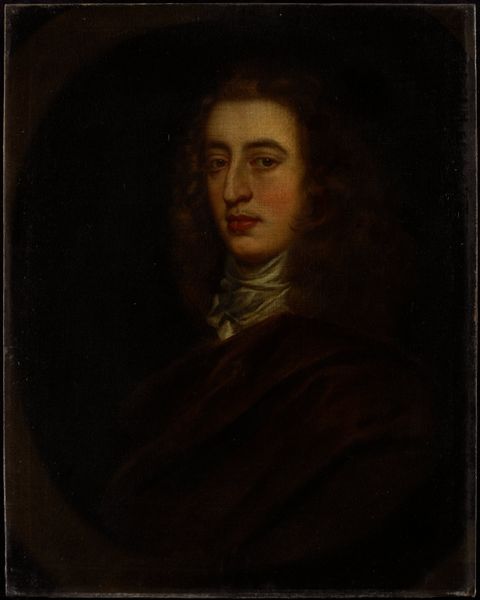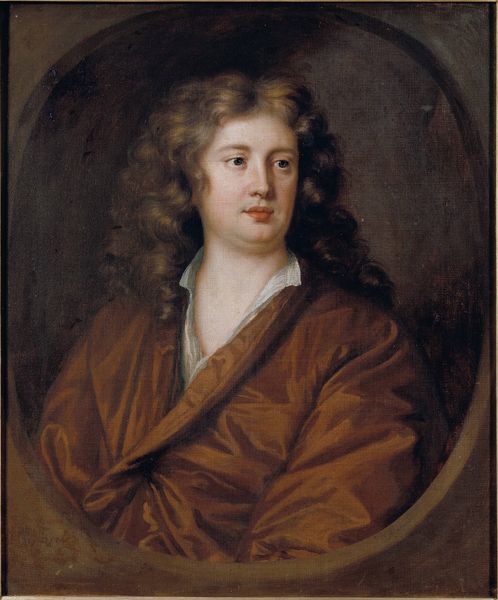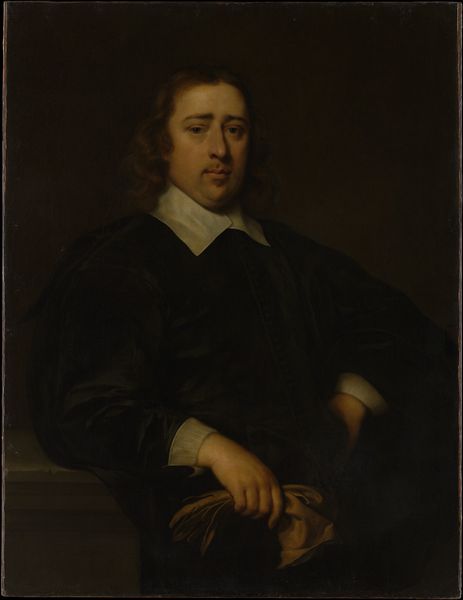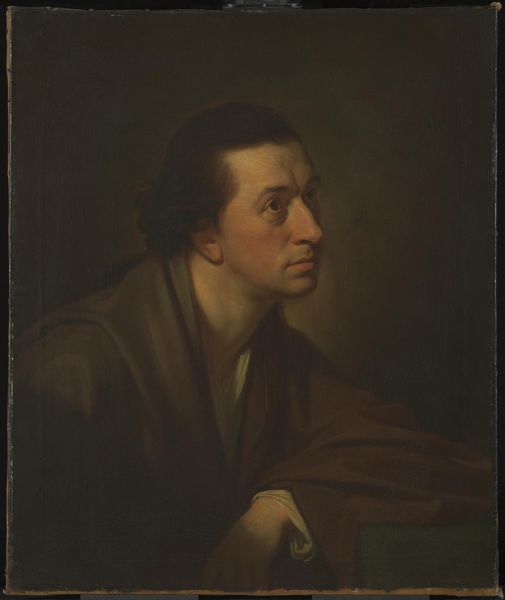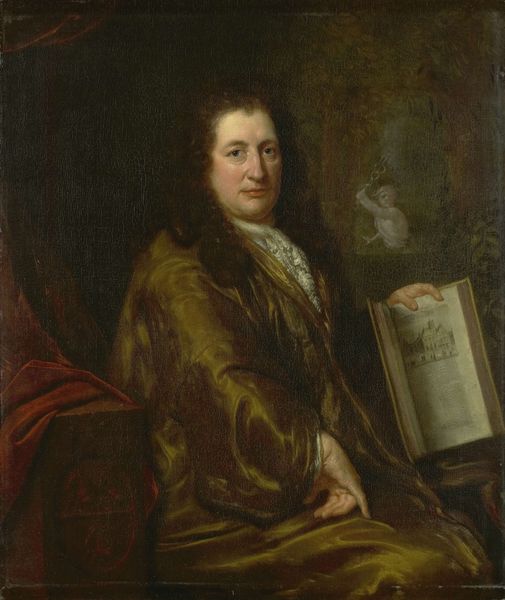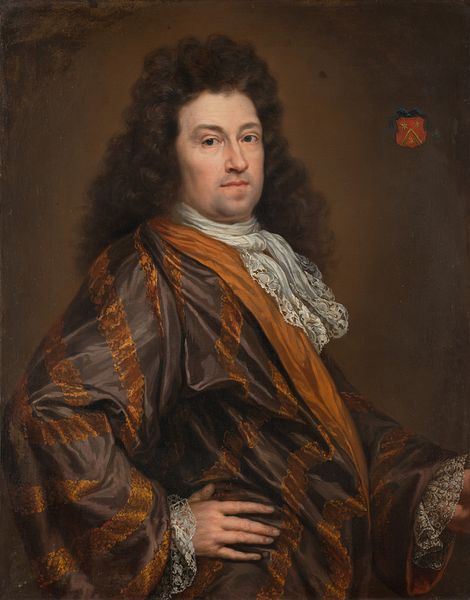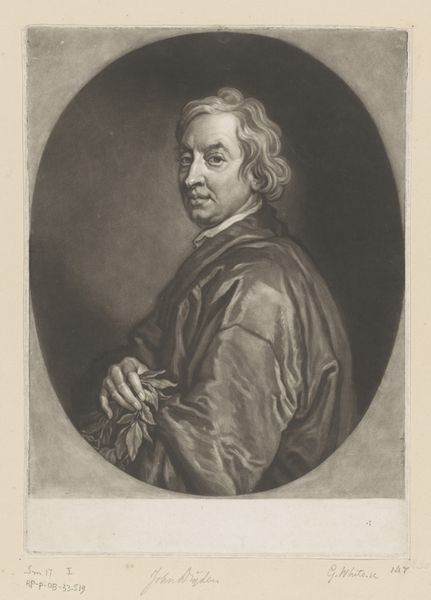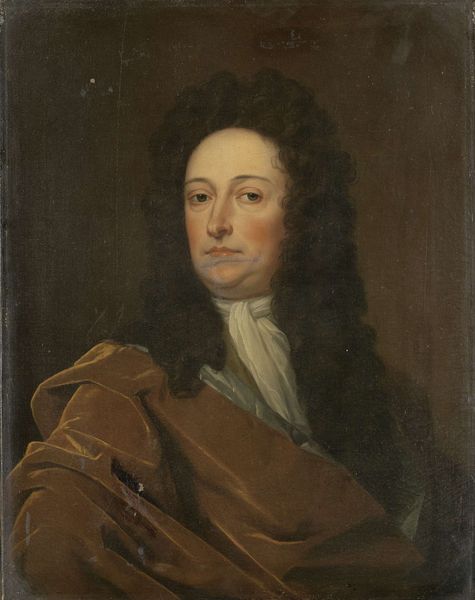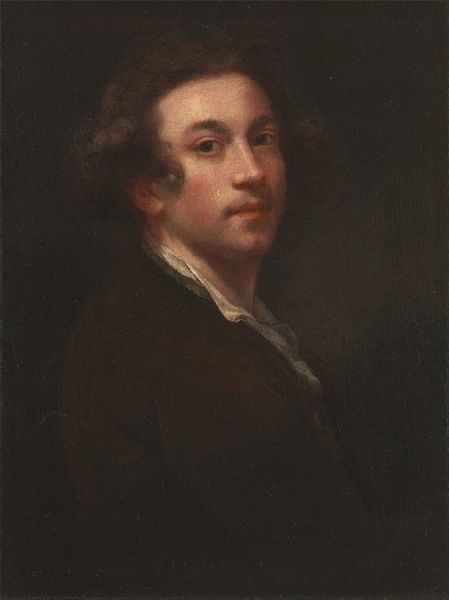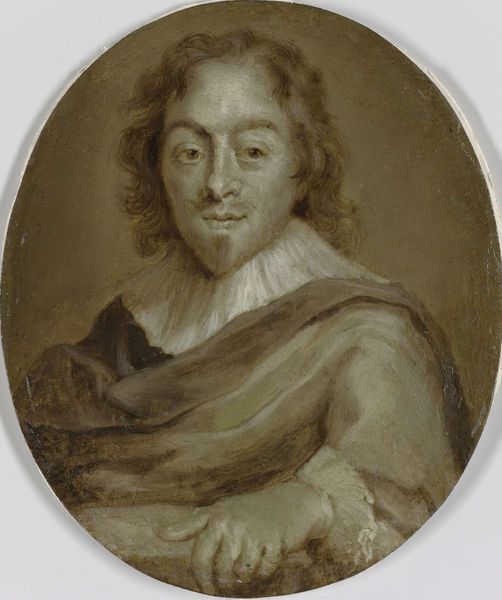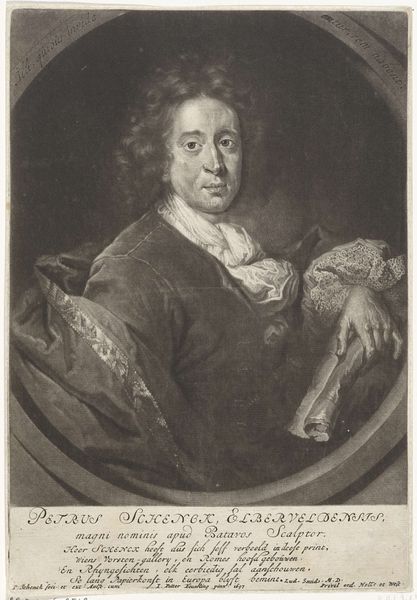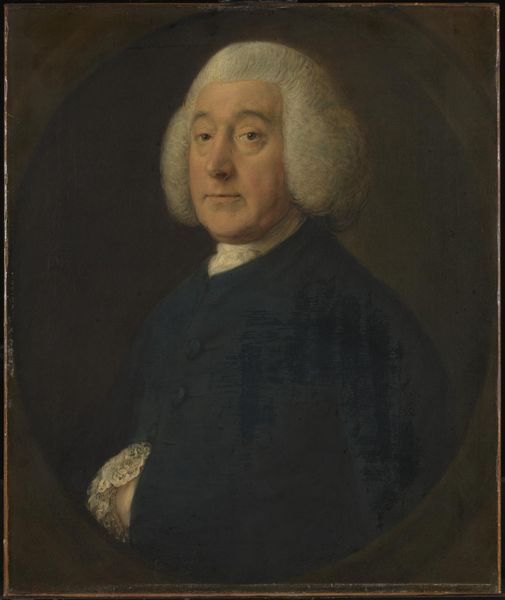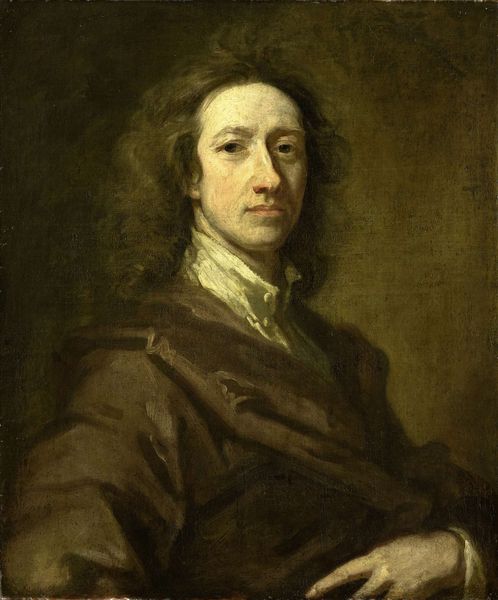
Dimensions: 78 cm (height) x 62.5 cm (width) (Netto)
Curator: We’re looking at “Man’s Portrait,” a painting made in 1786 by Erik Pauelsen, currently housed at the SMK, Statens Museum for Kunst. It's an oil-on-canvas portrait typical of its time. Art Historian: The immediate impression I get is one of understated authority. The oval format and somber color palette create a sense of gravity, almost as if he's meant to represent more than just himself. Curator: Indeed. Considering the historical context, Denmark in the late 18th century was experiencing a growing bourgeois class, eager to emulate the aristocracy. Portraiture became a symbol of status. Pauelsen here portrays an unnamed man but places him firmly within that rising middle class, claiming his space in a shifting social order. Art Historian: Look at the drape of the man’s garment – the muted brown shades suggest a grounded, almost earthy presence. His slightly parted lips add a sense of human fallibility; he's not idealized, and thus feels much closer. What might he symbolize beyond societal class? Perhaps an ideal of reasonable thinking? Curator: I agree on his being grounded, but consider the romantic undertones too. This was an era when individual emotion and experience started gaining prominence, challenging Enlightenment ideals. There's a directness in his gaze, suggesting honesty and openness—virtues associated with emergent Romanticism. His gender, of course, must be factored into understanding any claim to these ideals, for at the time access to self-representation and open virtue was always already curtailed along strict patriarchal lines. Art Historian: Absolutely. And consider his hairstyle; neatly kept yet natural. It signals not only wealth but intellectual standing. Thinkers, scientists, artists – the subtle statement may represent belonging and access to enlightenment thought. This kind of attention to personal visual codes creates an iconography that defines belonging within cultural elites. Curator: What fascinates me is how Pauelsen walks a tightrope between realist depiction and idealized representation of a burgeouis masculine identity. While seemingly straightforward, portraits such as these operated within an intricate system of symbolic messaging related to class, gender and emergent nationalism. It makes you consider to whom access was readily provided to engage and project within such networks. Art Historian: Agreed. And ultimately, the impact lies in how successfully these symbols coalesced to embody what that era was striving to become. In an era before photography, these carefully arranged visual cues worked in symphony to convey both explicit messaging and deeply embedded societal longings. Curator: Looking deeper, I feel like this unassuming painting speaks volumes about a particular inflection point in European history—one of class aspiration and nascent identity politics. Art Historian: For me, the painting resonates as a study in considered representation. The layering of visual symbols creates a kind of roadmap of aspirations held by an emergent middle class as the social codes were in the midst of renegotiation.
Comments
No comments
Be the first to comment and join the conversation on the ultimate creative platform.
